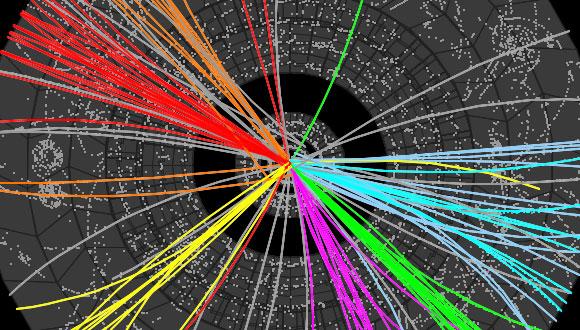Particle Physics Seminar
Gil Peled, Ori Fogel, Ben Bar, TAU
Gil Peled, TAU - Constraining Dark Matter Inside Stars Using Spectroscopic Binaries and a Modified Mass-Luminosity Relation
Abstract:
The presence of a dissipative dark matter (DM) sector may allow for the trapping of a significant DM mass inside stars, either during structure formation or by accretion over their lifetime, influencing stellar behavior well into the Main Sequence stage. Motivated by this scenario, we place an upper bound on the fractional DM mass within current-day Main Sequence stars. Using double-lined spectroscopic binaries (SB2 stars), gravitational masses are extracted and contrasted with luminous masses, derived using a modified mass-luminosity relation which accounts for the effect of DM. High-accuracy mass and luminosity data from a sample of 486 binary stars in the 0.18 < M/M_sol < 31 mass range are partitioned into appropriate mass domains and analyzed. A 95% C.L. upper limit of sub-5% is found for the subset of 263 stars in the 1 < M/M_sol < 2.4 regime.
Ori Fogel, TAU - Search for a heavy neutral lepton that mixes with the tau neutrino
Abstract:
Heavy neutral leptons (HNLs) are highly motivated as a solution to the problems of neutrino masses dark matter and the baryon asymmetry of the universe. In light of tight limits set by previous searches for HNLs that mix with electron and muon neutrinos, we search for an HNL that mixes predominantly with the tau neutrino. Such an HNL can be produced in tau decays, which are best studied in B-factory experiments. We search for the HNL in a sample of 8.8*10^8 ee->tau tau events collected by the Belle experiment at center-of-mass energies around 10.58 GeV. The search focuses on long-lived HNLs with mass in the range 0.3-1.6 GeV exploiting the displaced-vertex signature for suppressing background.
Ben Bar, TAU - The classical string configurations and magnetic moment of hadrons
Abstract:
Magnetic moment of hadrons is a phenomena explored by various approaches through the years, namely: The Constituent Quark Model, QCD, Lattice QCD and the stringy approaches - Nevu-Schwartz and Green-Schwartz.
We present a review for the above mentioned approaches to the subject in addition to a modified approach which is a stringy-quark model hybrid: inspired by Prof. Sonnenschein's HISH (holography inspired stringy hadrons) model, we propose a diquark-quark formalism analogous to the well known quark model. Using PDG's ratio between the proton's and neutron's magnetic moments in order to solve for the baryon's wave function weights, fitting the "diquark constituent model" magnetic moment to the constituent quark model at the limit of $m_u=m_d$.
Then, using Marinov's Lagrangian (in the Nevu-Schwartz approach), we deduce the form of the baryon magnetic moment and perform a fit to the diquark mass, $u$ quark mass (equal to the $d$ quark mass) and the $s$ quark mass using the stringy baryon magnetic moment and experimental PDG data. Finally, we present a subject of future interest originating from Pisarski's approach.
Seminar Organizers: Dr. Michael Geller & Dr. Adi Ashkanzi


